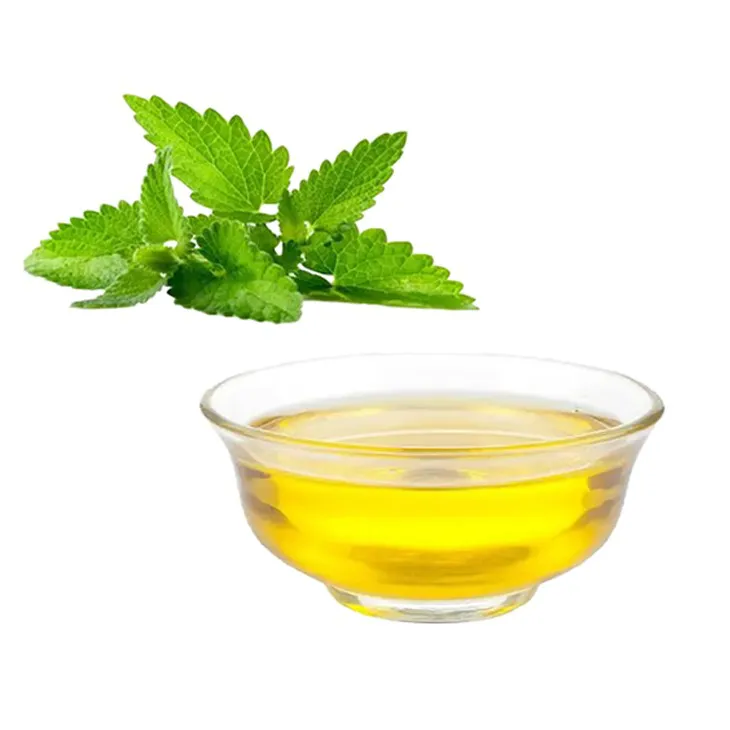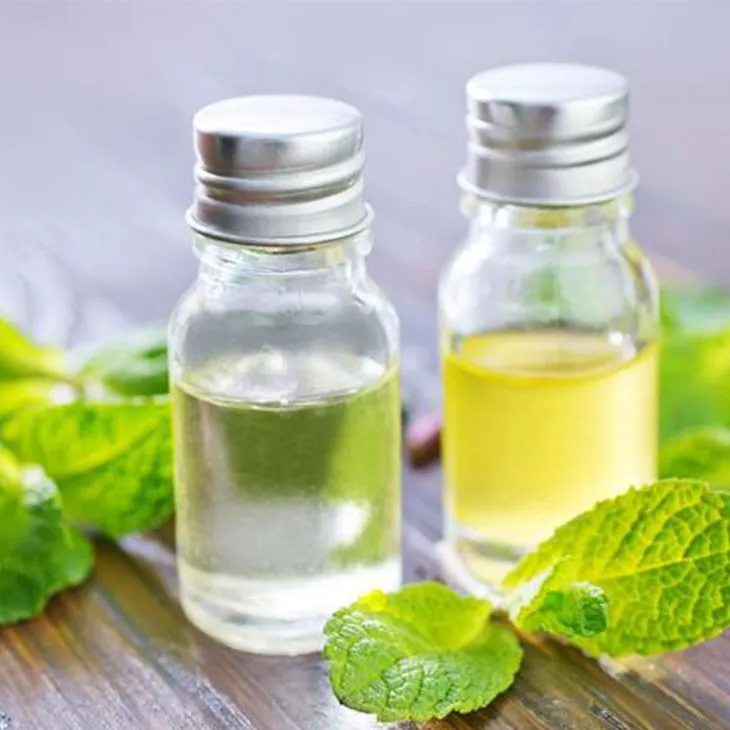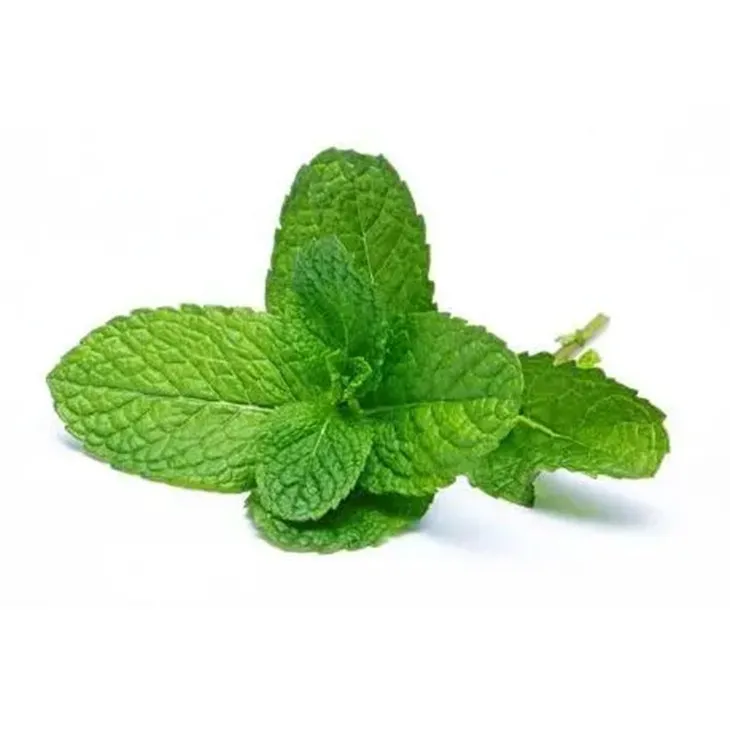- 0086-571-85302990
- sales@greenskybio.com
The Optimal Bioavailability of Peppermint Oil.
2024-11-28

Introduction
Peppermint Oil has been widely recognized for its various health benefits, including its ability to soothe digestive issues, relieve headaches, and improve respiratory function. However, the effectiveness of Peppermint Oil depends not only on its inherent properties but also on its bioavailability. Bioavailability refers to the proportion of a substance that enters the circulation and is available at the site of action. Understanding how to optimize the bioavailability of Peppermint Oil is crucial for maximizing its therapeutic potential.

Processing Techniques and Bioavailability
1. Extraction Methods
Steam Distillation: This is one of the most common methods for extracting peppermint oil. Steam distillation helps to preserve the volatile compounds in peppermint oil, which are important for its bioactivity. The gentle heat and steam used in this process can extract the essential oil without significantly degrading its chemical components. This results in a relatively pure form of peppermint oil with good bioavailability.
Solvent Extraction: While solvent extraction can be an effective way to obtain peppermint oil, it may introduce some residues of the solvent if not properly purified. These residues can potentially affect the bioavailability of the oil. Additionally, some solvents may extract unwanted compounds along with the essential oil, which could interfere with its absorption in the body.
2. Refining and Purification
After extraction, refining and purification processes play a significant role in bioavailability. Proper purification can remove impurities such as waxes, resins, and other non - essential components. These impurities may hinder the absorption of peppermint oil in the body. For example, if there are excessive waxes in the oil, they may form a barrier that prevents the active compounds from being released and absorbed effectively.

Product Selection for Optimal Bioavailability
1. Quality of Raw Materials
The quality of the peppermint plants used for oil extraction is fundamental. Peppermint grown in ideal environmental conditions, free from pesticides and other contaminants, is likely to produce higher - quality oil with better bioavailability. Organic peppermint is often a preferred choice as it is grown without the use of synthetic pesticides and fertilizers, which can potentially affect the chemical composition of the oil.
2. Concentration and Purity
- High - concentration peppermint oil may have different bioavailability characteristics compared to diluted forms. A more concentrated oil may require less volume to deliver the same amount of active compounds, but it may also be more potent and potentially cause irritation if not used properly.
- Purity is also crucial. Oils that are free from additives, fillers, and contaminants are more likely to have optimal bioavailability. Some products on the market may contain added substances for various reasons, such as to improve the smell or texture, but these can interfere with the bioavailability of the peppermint oil itself.

Usage Methods and Bioavailability
1. Oral Administration
- When taken orally, peppermint oil is usually encapsulated to protect it from degradation in the stomach acid. Enteric - coated capsules are a good option as they allow the oil to pass through the stomach and be released in the intestines, where absorption is more favorable. This can enhance the bioavailability of the oil as it avoids the harsh acidic environment of the stomach that could potentially break down some of its active components.
- Another aspect of oral administration is dilution. If peppermint oil is too concentrated when taken orally, it may cause discomfort or irritation. Diluting it in a suitable carrier oil, such as olive oil or coconut oil, can make it more palatable and also potentially improve its absorption.
2. Topical Application
- For topical application, the skin's condition can affect bioavailability. Well - hydrated skin is more permeable and may allow for better absorption of peppermint oil. Before applying the oil topically, it is advisable to clean and moisturize the skin gently.
- The use of a carrier oil in topical applications is also important. Carrier oils not only help to dilute the peppermint oil but also assist in its penetration through the skin. Some common carrier oils for peppermint oil include jojoba oil, almond oil, and grapeseed oil. These carrier oils can enhance the bioavailability of peppermint oil by facilitating its diffusion through the skin layers.
3. Inhalation
- Inhalation of peppermint oil vapors can be an effective way to utilize its properties. When inhaled, the volatile compounds in the oil can directly reach the respiratory system and potentially have a local effect. However, the bioavailability in this case is related to the efficiency of the inhalation device. For example, a diffuser that disperses the oil in fine droplets can increase the surface area of the oil exposed to the air, making it easier for inhalation and potentially enhancing bioavailability.
- The duration and frequency of inhalation also matter. Longer inhalation times may allow for more of the active compounds to be absorbed, but excessive inhalation may cause irritation. Finding the right balance is key to optimizing bioavailability through inhalation.

Interaction with Other Substances
Peppermint oil may interact with other substances, which can affect its bioavailability. For example, it may interact with certain medications. Peppermint oil has been shown to affect the absorption and metabolism of some drugs. It is important to consult a healthcare provider before using peppermint oil if you are taking medications, especially those that are metabolized in the liver or intestines.
Foods can also influence the bioavailability of peppermint oil. Consuming a high - fat meal before taking peppermint oil orally may increase its absorption as fats can help to solubilize the oil. On the other hand, some acidic foods or beverages may decrease its bioavailability if taken simultaneously, as they can change the pH environment in the digestive tract.
Conclusion
Optimizing the bioavailability of peppermint oil is a multi - faceted process that involves considering various factors. From the extraction and processing techniques to product selection, usage methods, and potential interactions with other substances, each aspect plays a role in determining how effectively the body can utilize the beneficial properties of peppermint oil. By understanding these factors and making informed choices, consumers and healthcare providers can ensure that peppermint oil is used in a way that maximizes its therapeutic potential.
FAQ:
What factors can affect the bioavailability of peppermint oil?
Several factors can influence the bioavailability of peppermint oil. Processing techniques play a significant role. For example, extraction methods can determine the purity and composition of the oil, which in turn affects how well it can be absorbed by the body. Additionally, the form of the product, such as capsules or liquid, may also impact bioavailability. The presence of other substances in the formulation, like carriers or additives, can either enhance or hinder the absorption of peppermint oil.
How do different processing techniques impact the bioavailability of peppermint oil?
Steam distillation, a common processing technique for peppermint oil, can help preserve the active components, which is beneficial for bioavailability. However, if the process is not carried out properly, it may lead to the loss of some volatile compounds that are important for absorption. Solvent extraction might introduce residues that could potentially interfere with absorption. Cold - pressed peppermint oil, on the other hand, may retain more natural components, but its bioavailability can be affected by factors such as the quality of the raw material and the extraction efficiency.
What are the best product forms for optimal peppermint oil bioavailability?
Enteric - coated capsules are often considered a good option for optimal bioavailability of peppermint oil. These capsules are designed to protect the oil from stomach acid, allowing it to be released and absorbed in the intestines where the environment is more favorable for absorption. Liquid forms can also be effective, especially if they are formulated with substances that enhance absorption. However, liquid peppermint oil may have a stronger taste, which some people may find unpleasant.
How should peppermint oil be used to ensure maximum bioavailability?
When using peppermint oil, it is important to follow the recommended dosage. Taking it with food can sometimes enhance absorption, as certain food components may interact with the oil in a positive way. For enteric - coated capsules, they should be swallowed whole without crushing or chewing. If using liquid peppermint oil, it can be diluted in a small amount of water or other suitable liquid and consumed immediately. Also, consistency in usage over time may be important for achieving maximum bioavailability.
Are there any side effects related to improving peppermint oil bioavailability?
When trying to improve the bioavailability of peppermint oil, there can be potential side effects. If the dosage is too high, it may cause gastrointestinal discomfort such as heartburn, nausea, or diarrhea. Also, some people may be allergic to peppermint oil or the substances used in its formulation to enhance bioavailability. It is always important to consult a healthcare professional before starting any new regimen involving peppermint oil.
Related literature
- The Effects of Peppermint Oil on Digestive Health and Bioavailability"
- "Bioavailability Studies of Peppermint Oil: A Comprehensive Review"
- "Peppermint Oil Processing and Its Impact on Bioavailability"
- ▶ Hesperidin
- ▶ Citrus Bioflavonoids
- ▶ Plant Extract
- ▶ lycopene
- ▶ Diosmin
- ▶ Grape seed extract
- ▶ Sea buckthorn Juice Powder
- ▶ Fruit Juice Powder
- ▶ Hops Extract
- ▶ Artichoke Extract
- ▶ Mushroom extract
- ▶ Astaxanthin
- ▶ Green Tea Extract
- ▶ Curcumin
- ▶ Horse Chestnut Extract
- ▶ Other Product
- ▶ Boswellia Serrata Extract
- ▶ Resveratrol
- ▶ Marigold Extract
- ▶ Grape Leaf Extract
- ▶ New Product
- ▶ Aminolevulinic acid
- ▶ Cranberry Extract
- ▶ Red Yeast Rice
- ▶ Red Wine Extract
-
Propolis Extract Powder
2024-11-28
-
Thunder God Vine Extract
2024-11-28
-
Stevia Extract
2024-11-28
-
Saffron Extract Powder
2024-11-28
-
Maca Extract
2024-11-28
-
Nettle leaf extract
2024-11-28
-
Okra Extract
2024-11-28
-
Boswellia Serrata Extract
2024-11-28
-
Cassia Seed Extract
2024-11-28
-
Lemon Juice Powder
2024-11-28





















